Introduction
Today, reality TV and social media can confer overnight global attention and financial benefits to previously unknown personalities. Sometimes this celebrity status is carefully planned and a selected career option, but overnight stardom can often be unplanned and unwanted. In this context, it is worth considering the attention that is given to fossils in the growing global market of geotourism. Fossils which have been hidden in rocks for hundreds of millions of years may sometimes be exposed to the public by erosion or human intervention, in building materials or through the routing of human visitors along new walking trails. As a by-product of geological education and training programs or academic research, these fossils may be featured in promotional material, social media or news publications.
Fossils currently form a very small part of Geopark website and social media content; I recently conducted a survey of 75 European Geopark Network (EGN) member websites and only two had images of fossils on the home page. On EGN member Facebook pages, very few images of fossils are shown, the best examples being from Hateg Geopark, Romania, the Basque Coast Geopark, Spain and the Burren and Cliffs of Moher Geopark, Ireland. This is perhaps understandable as fossils form a subset of geology and geology is a subset of Geopark content, which is usually dominated by outdoor activities, food, and other saleable products.
This article is a light-hearted look at some of our new and more established Carboniferous fossil celebrities in the Burren and Cliffs of Moher UNESCO Global Geopark; however the message is a reminder that the geotourism/geo-exploitation versus geoconservation (Hose 2007) debate must be considered in all geotourism developments. To this end, I give an assessment of the geoconservation risk of increased public exposure for each fossil group in the Burren.
Just as people may be ranked as A-, B- or C-list celebrities, the fossils can be similarly ranked on their ability to attract attention from the public for promotional exploitation. In neither case does this ranking have any link to their value as individuals, and each paleontologist will consider the fossils they study as more interesting and important than any other.
The geology of the Burren area makes it ideal as a teaching location (Fig.1). Apart from some glacial erratics, all the rocks and fossils are from the middle of the Carboniferous period (Barham et al. 2015; Fallon and Murray 2015). Lithologies are conveniently broadly epoch-specific as limestone is only found in the Mississippian (upper Viséan) while siliciclastics only occur in the Pennsylvanian (lower Bashkirian). This is broadly reflected in the fossil faunas too as the fossils most likely to be found by a casual visitor in the limestone are corals, brachiopods and crinoids, whereas in the siliciclastics they are most likely to find plants, ammonoids, bivalves and trace fossils.
It is worth noting that there have been no reported incidences of damage or removal of fossils, despite the high public profile of some of these sites and fossils through the Geological Survey of Ireland-funded publication ‘Stone, Water and Ice - A geology trip through the Burren’(Doyle 2017); a non-specialist publication that describes the geosites (including fossils) of the Burren. Furthermore, the increased use of fossils in social media coverage by the Geopark and its partners does not appear to have had a negative impact on their geoconservation status, although continued monitoring is required.
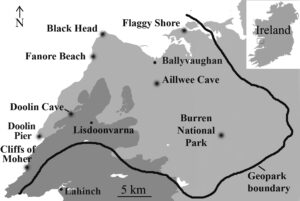
Figure 1. Location map showing sites mentioned in the text and simplified geology: light grey = Mississippian limestone, dark grey = Pennsylvanian siliciclastics.
Celebrity fossils and Where to Spot them in the Burren.
The following is a list of the main types of fossils encountered by visitors to the Burren area, along with some of the locations where they can be seen and information about their claim to fame, whether they are considered A-, B- or C-list celebrities and a brief consideration of the potential risk to public exposure.
Trace Fossils
Suggested Location: Cliffs of Moher Visitor Experience
Our first celebrity fossils are trace fossils (Fig. 2). They include the ichnogenus Psammichnites (see Mángano and Rindsberg 2003 for a review of Psammichnites) but are most commonly referred to locally by the rocks in which they are found; ‘Moher Flags’[Flag being an abbreviation of ‘flagstones’], with the trace fossils usually called ‘worm trails’. They are found along the length of the Cliffs of Moher (where they are quarried) but are most visible at The Cliffs of Moher Visitor Experience, the single most visited outdoor visitor attraction in Ireland, with over 1.6 million visitors in 2019. Initially developed by local landlord Cornelius O’Brien in the 1830s as a place to entertain his guests while providing employment for his tenants, the Cliffs of Moher have become the most iconic of Irish visitor sites and are on the bucket list of most travelers. Our trace fossils have been quarried locally for hundreds of years (as early as the 16th Century) and were a significant export to the UK in the 19th Century as paving and decorative stone because of the attractive surface pattern of the thin flagstones. Indeed, it is this feature that made them appropriate as a wall along the entire length of the Cliffs of Moher by Cornelius O’Brien.
Though little known abroad, these trace fossils have been local celebrities for almost 200 years, as they are quarried locally and are exposed on walls, footpaths and old roofs throughout the area. Definitely a local A-list celebrity.
These quarried slabs are subject to footfall wear when used as paving stone. Natural weathering and overgrowth by lichens on the older exposed wall slabs outweigh any damage by visitors. There are currently no measured rates of erosion, but they can be considered as low risk as they are highly unlikely to be removed by visitors.
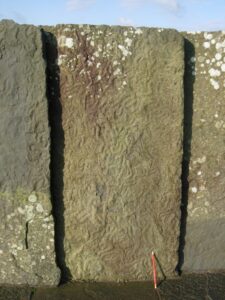
Figure 2. Wall slab on walking trail with abundant Psamminchnites trace fossils at the Cliffs of Moher. Pencil = 15 cm
Corals
Suggested Location: Cliffs of Moher Visitor Experience, Burren National Park, Flaggy Shore, Black Head
Following the development of the Visitor Centre at the Cliffs of Moher in 2007, Carboniferous (Viséan) limestone blocks containing abundant coral (as well as brachiopods and crinoids) were added to the paving stones on steps leading to O’Briens’s Tower (Fig. 3). The white calcite of the fossils is prominent and aesthetically pleasing against the dark polished surfaces of the micritic limestone.
Large (>1 m diameter) colonial corals are also exposed along a walking trail at Mullaghmore in the Burren National Park (Fig. 4). Here the corals are partially silicified, are darker and weathered proud of the rock surface. The corals are typical representatives of the Viséan, including a variety of species of Palaeosmilia, Siphenodendron, Lithostrotion, Syringopora, Solenodendron and Zaphrentids (Gallagher et al. 2006).
Corals are not generally associated with Ireland, despite recent work on living deep water corals from the west coast of Ireland (Roberts et al. 2006); they remain linked in popular culture with shallow warm tropical seas, and the presence of abundant corals in Irish limestone is an important aid in explaining the existence of ancient tropical shallow seas.
The corals have struggled to maintain a high profile, but they are solid B-list celebrities because of their association with exotic warm tropical seas. The corals are considered as at low risk because it is difficult for visitors to extract them from the limestone. There is some wear from footfall along the walking path in the Burren National Park.
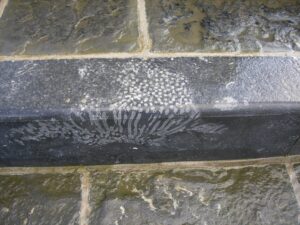
Figure 3. Corals in the steps at the Cliffs of Moher. Step height = 15 cm.

Figure 4. Silicified colonial coral on walking trail, Burren National Park. Maximum diameter of colony = 60 cm.
Brachiopods
Suggested location: Cliffs of Moher Visitor Experience, Aillwee Cave Geosite
Large gigantoproductid brachiopods (as well as Linoproductus and Davidsonia) are found in some horizons of the Carboniferous limestone in the Burren (Fig. 5). These are most likely to be seen at prominent locations such as the Cliffs of Moher, alongside their coral colleagues in the steps and also along a significant bedding surface in Aillwee cave; a family-run tourist center that welcomes tens of thousands of visitors each year.
As most non-geologists have never heard of brachiopods and they are rather crudely compared to scallops or clams, they attract little attention and are definitely C-listers that have to do a lot of work to rise higher in the rankings. These are considered to be at low risk because of the low level of interest and the difficulty in extracting them from the hard limestone.
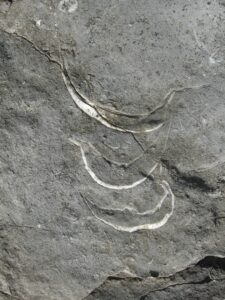
Figure 5. Brachiopod shells, Burren National Park. Maximum length = 10cm.
Ammonoids
Suggested Location: Lisdoonvarna Spa Wells and Doolin Pier Geosite
Geologically, there can be little doubt that the ammonoids have been the most important fossils in the Geopark because they are biostratigraphic markers for the siliciclastic basin fill of the Clare Shale Formation and the cyclothemic Central Clare Group. These small (generally < 3 cm diameter) creatures are found in huge abundance (Fig. 6) in distinct horizons traditionally known as ‘marine bands’ (e.g. Hodson and Lewarne 1961; Bisat 1924), representing condensed sections. Reticuloceras (Phillipoceras) is the most common genus, but Homoceras, Homoceratoides, Anthracoceras and other typical Pennsylvanian ammonoids are present (Hodson 1954a, b, Lacchia et al. 2015).
High social media coverage by a local walking guide makes these little predators rising stars, and they could move up the rankings from their current B-list status. Ammonoids are collected as pebbles from storm beaches and so are at increased risk. The rate of replacement from natural storm erosion is likely high (Bertoni et al. 2016), but no site-specific data exists.

Figure 6. Ammonoids, Doolin Pier. Maximum diameter = 2.5 cm
Crinoids
Suggested Location: Doolin Pier Geosite, Fanore Beach Geosite, Doolin Cave Geosite
Perhaps the most common macrofossils in the Burren, crinoids have been neglected because they are generally disarticulated (Fig. 7). Recent work has started to change that; the naming of a new columnogenus and species Heloambocolumnus harperi (Donovan and Doyle 2019) and further work on stem segments of a separate species (Donovan and Doyle 2020) in formal academic publications as well as social media posts has exposed these creatures to a new audience.
These have been struggling C-list celebrities for a long time, but the new research has given them some new fans and they could become B-list celebrities before long. Crinoids are very low risk because of their huge abundance and the difficulty in extracting them from the limestone.
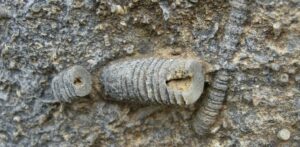
Figure 7. Crinoids, Fanore Beach. Length of vertical stem section = 5cm.
Vertebrates: Tetrapods and Fish
Suggested Location: Doolin Pier Geosite
There can be little doubt that vertebrate fossils generate most public interest, with dinosaurs and sharks being the apex media grabbers and dominant A-listers. The largest predators in particular get the most media attention, such as T. rex and Megalodon sharks. In the Burren our vertebrate fauna is sparse and poorly known. Recent research on Pennsylvanian tetrapod bones (Doyle and O’Gogain 2019) resulted in significant media coverage, partly because they were linked to dinosaurs in the press release, but also through the use of a reconstructed Pennsylvanian tetrapod image (courtesy of Scottish Museums) which gave life to the otherwise insignificant looking material (Fig.8).
Many celebrities require facelifts or other cosmetic assistance when facing the press. Even minor tetrapod fossils can be A-listers. However, they may have some competition; a shark tooth (as yet unpublished) found by the author in 2016 was shown on prime-time national news, and should generate more publicity, but are unlikely to challenge for A-list status. As they are small and rare, these vertebrate fossils are difficult to find and are at low risk from casual collection.
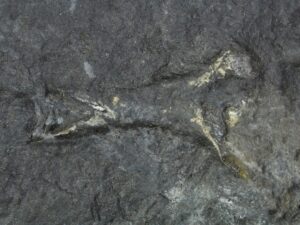
Figure 8. Vertebrate bone, Doolin Pier. Length of bone = 1 cm.
Discussion and Conclusions
The position of Geopark geologist in UNESCO Global Geoparks offers an opportunity to explore the academic geological heritage and the public geotourism potential of that heritage. This requires writing about the local geology in widely different ways for different audiences. The fossils of the Burren and Cliffs of Moher UNESCO Global Geopark provide ample resources for both. Some fossils generate more public interest than others, but it is up to us to introduce the public to new fossils and to broaden awareness of geoheritage while integrating geotourism and geoconservation in a sustainable way. Careful consideration should be given to the types of fossils presented to the public, but also to how they are presented. Further, it is important to manage the expectations of visitors; the fossils should be included as just one part of a more inclusive geotourism offering.
The sobering truth for paleontologists is that fossils are generally not used for promotion of geotourism or Geoparks, as noted earlier. My own Geopark (Burren and Cliffs of Moher) website also lacks front-page fossil representation, although this will change when the website is updated next year. Of course, many Geoparks have few or no fossils, but the likelihood is that most website content managers take their instructions from Geopark managers, not geologists/paleontologists and the current model of geotourism emphasizes saleable outdoor adventure activities, food experiences etc. Perhaps fossils are seen as being vulnerable to geotourism and images could damage geoconservation aims by encouraging over-collection.
Social media plays a huge role in all aspects of modern life and it is essential for marketing and promotion because it can rapidly reach a potential audience. By controlling which fossils are posted, but equally by what is not posted (such as sensitive location information), the geopark geologist can create a narrative balancing geotourism and geoconservation. It is usually for paleontologists to decide which fossils and which locations are promoted through social media, and we must be prepared to engage with social media and put ourselves as well as the fossils in the spotlight, while carefully considering the potential geoconservation impacts. Each Geopark may require a specific social media strategy just for fossils. The UNESCO Global Geoparks geoconservation strategy which bans the sale of fossils (and other geological objects) within Geoparks can be seen as limiting people’s exposure to fossils, but using images on social media is one way of overcoming this.
There may be a temptation for the geopark geologist to focus only on the A-listers and so to present a biased view of the paleobiodiversity of the Geopark, but this can be tempered by working with many fossil groups and forging relationships with specialists in a broad range of paleontology from external research institutes or universities to broaden the presentation to the public. Such collaborations can result in research publications about newly discovered fossils from the Burren and Cliffs of Moher. This should contribute to a greater understanding of Carboniferous fossils in general, promote geoconservation, raise local awareness, interest and pride in geological heritage within the Burren and finally contribute to the geotourism offering of the Burren in a sustainable way.
In terms of its fossil collection policy, the Burren and Cliffs of Moher UNESCO Global Geopark does not permit the extraction of fossils from within its boundaries. Indeed, fossil collection from sites within the Geopark (or beyond) which are designated as Special Areas of Conservation (SAC) is forbidden by law, and other sites are covered by the Irish Geological Heritage Program which is managed by the Geological Survey of Ireland and these sites are recognized by Clare County Council under the Planning and Development Act 2000. Limited collection for academic research or educational purposes is acceptable once the relevant permissions have been secured from the National Parks and Wildlife Service which is the national legislative authority responsible for managing SACs, or from the Geopark geologist from all other areas. The majority of the land in the Burren is privately owned and there is no ‘right to roam’ across the Burren apart from on marked trails, coastal amenities or in the Burren National Park.
Acknowledgments
I acknowledge the support of Clare County Council and Geological Survey Ireland and all the landowners who give me access to their property.
References
Barham M, Murray J, Sevastopulo GD& Williams DM (2015). Conodonts of the genus Lochriea in Ireland and the recognition of the Viséan–Serpukhovian (Carboniferous) boundary. Lethaia. 48:151-171.
Bertoni D, Sarti G, Grottoli E, Ciavola P, Pozzebon A, Domokos G, Novák-Szabo T (2016). Impressive abrasion rates of marked pebbles on a coarse-clastic beach within a 13-month timespan. 381:175-180.
Bisat WS (1924). The Carboniferous goniatites of the north of England and their zones. Proceedings of the Yorkshire Geological Society. 20:40-124.
Donovan SKD & Doyle EN (2019). Utility of crinoid columnals in palaeontology illustrated by a new species: Clare Shale Formation (Carboniferous), Doolin, County Clare, Ireland. Proceedings of the Geologists Association. 130:696-700
Donovan SK. and Doyle E (2020). Significance of crinoid preservation: Clare Shale Formation (Upper Carboniferous), Fisherstreet Bay, Doolin, County Clare, Ireland. Proceedings of the Geologists’ Association. 131: 601–603.
Doyle E & O’Gogáin A (2019). Tetrapod bones from the Clare Shale Formation (Pennsylvanian, Bashkirian) of County Clare, Ireland. Irish Journal of Earth Sciences. 37:19-25.
Doyle E, Hennessy R, McNamara M & Hocter Z (2017). Stone, Water and Ice –A geology trip through the Burren. 3rd Edition. Published by the Burren and Cliffs of Moher UNESCO Global Geopark.132pp. ISBN: 0-9567204-2-9
Fallon P &Murray J (2015). Conodont biostratigraphy of the mid-Carboniferous boundary in Western Ireland. Geological Magazine. 152:1025—1042.
Gallagher SJ, McDermot CV, Somerville ID, Pracht M & Sleeman AG (2006). Biostratigraphy, microfacies and depositional environments of Upper Visean limestones from the Burren region, County Clare, Ireland. Geological Journal. 41:61-91.
Hodson F (1954a). The beds above the Carboniferous Limestone in north-west County Clare. Quarterly Journal of the Geological Society, London. 109:259-283.
Hodson F (1954b). The Carboniferous rocks of Foynes Island, Co. Limerick. Geological Magazine. 91:153-160.
Hodson F & Lewarne G (1961). A mid-Carboniferous (Namurian) basin in parts of the counties of Limerick and Clare. Quarterly Journal of the Geological Society, London. 117:307-333.
Lacchia AR, Sevastopulo GD & Graham JR (2015). Mid Carboniferous ammonoids from the Shannon Basin, western Ireland: identification of crushed material. Swiss Journal of Palaeontology. 135:75-85.
Mángano GM & Rindsberg A (2003). Carboniferous Psammichnites: Systematic Re-Evaluation, Taphonomy and Autecology. Ichnos. 9:1-22.
Roberts JM, Wheeler AJ & Freiwald A (2006). Reefs of the deep: the biology and geology of cold-water coral ecosystems. Science. 312:543-547.
